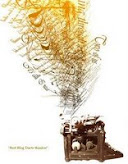Piet Mondrian wanted to find the heart of the things around him so that he could paint it onto his canvas. As he grew older, he art became simpler. The result, for you, is an easy-to-copy style. Today, learn to make your own Mondrian-inspired painting.
Supplies Needed:
Heavy sketch paper (white)
Paints in red, yellow, blue, and black
Paintbrush
Water (for rinsing the brush)
Ruler
Construction paper
Scissors
Pencils
Begin by drawing lines on your paper with your pencil. Use your ruler to make sure the lines are straight horizontal or vertical by measuring from the sides and marking several points along the line before drawing it. Use your imagination to decide where to draw the lines.
Next, fill in some of the squares formed by your intersecting lines with red, yellow, or blue paint. Make sure to leave some of the squares white. If your colors aren’t perfectly within the lines, that’s okay; you’ll paint your black lines next and they’ll cover the edges.
You will now paint over the pencil lines with black paint. The other colors need to dry first and in the meantime, you can make a stencil for painting the black lines. This will make them look crisp.
Cut a sheet of construction paper in half. Place the outer edges together. The edges that you just cut will be to the outside now. Cut a strip from another sheet of construction paper and then cut the strip in half. You’ll use this strip to connect the two halves of your construction paper.
You want to leave an opening about half an inch thick so measure a half an inch somewhere in the middle of the strip and mark it off. Do the same to the second strip. Now tape one strip to each end of the half-sheets of construction paper with the straight edges faces into the gap.
Mark the center of the gap by drawing a line on each strip. Now line up the pencil lines on your painting with these lines and use your stencil to paint black lines where the pencil lines used to be. You may need to fill in your lines a few at a time and let them dry before filling in a few more. You don’t want to set your stencil in wet paint.
Alternatively, you could use a thick black marker to draw the lines but paint will look better.
After you have painted all the lines, your masterpiece is complete! Let it dry, hang, and enjoy.
Return to main page.
Thursday, December 13, 2007
Subscribe to:
Post Comments (Atom)








4 comments:
Have been off for a week. Now I can see that you have continued your work very seriously. Without taking the tools to paint or manufacture anything myself, I really feel that you make art very simple and interesting at the same time. Your articles about different artists are really clear, nice and good! I enjoy the reading!
Thank you, Peter! You're always so complimentary. Glad to see you're back. I'll be sure to check out your blog tonight and see if you've posted anything about Sweden. Can't wait to read about your adventures.
I see that these posts are several years old...but I've just stumbled onto this blog. It's wonderful!
I teach 2nd grade, and we've just completed a mini unit of study about Mondrian. While I believe that teaching art for art's sake is a worthwhile endeavor, as a regular classroom teacher I must justify with academic stndards that fit my 2nd grade curriculum... I used the unit to reinforce geometry vocabulary, and English vocabulary-I work with English language learners, and these were just two of the curriculum standards. The kids each made their own Mondrian style piece using precut red, blue, yellow and white construction paper rectangles in various sizes. They chose the sizes,and colors that they wanted to use. We talked about how Mondrian used a lot of white, and usually seemed to only have one red, and a few blue and yellow rectangles. The kids chose accordingly. They glued their pieces onto a piece of graph paper, lining up the edges of the paper with the graphed lines, or in between (depending on the paper size). To finish up, they glued down slim strips of black to cover the edges where the papers met. Each piece of art is different based on their paper color and size choices, and arrangements. There's no paint involved, but in my classroom, it was a way to make it work! They look great. As a class they wrote about what they had learned about Mondrian (and could add more details thanks to your blog) and their pieces of art and writing are up out in the hall. Lots of students from other classes are stopping to look, and teachers are stopping to read about Mondrian to their younger students.
Thanks for your work on this blog. We'll be tuning back in as we learn about other artists.
Thanks for sharing your story! Your classroom seems like a wonderful place and I'm happy to hear that the kids in your school are getting more than just an hour a week of art. I hope this website can inspire future core curriculum-art connections. I'd love to hear about any of them.
Post a Comment